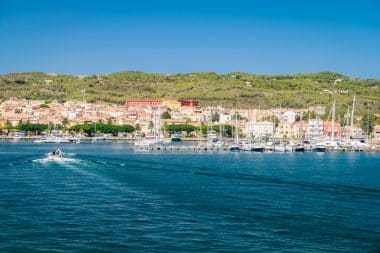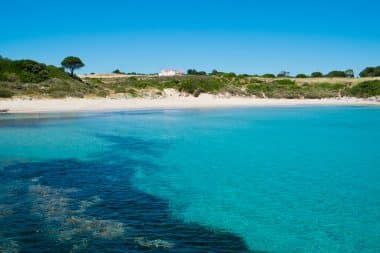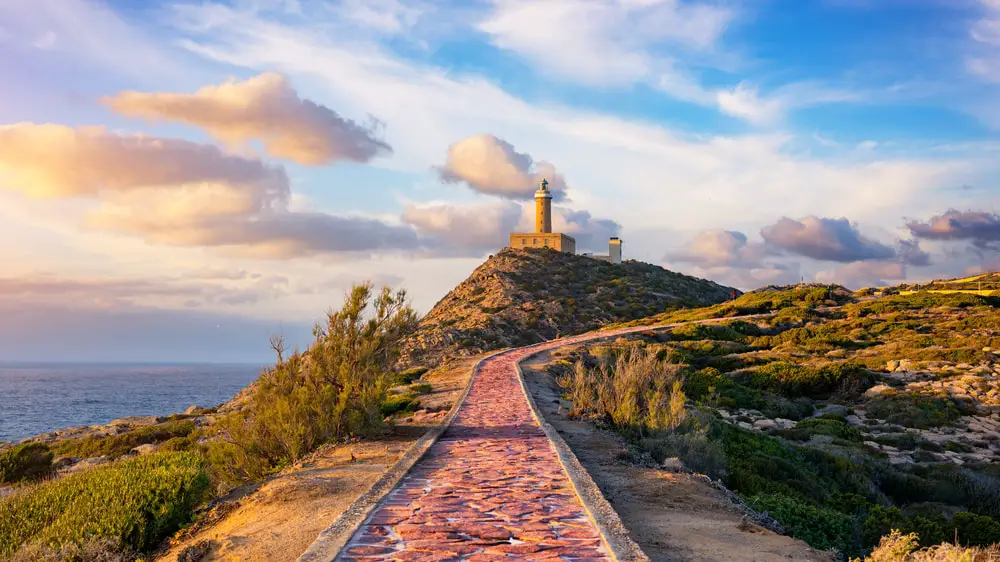If you love solitude, sun, beautiful beaches and Italian islands, you are in good hands on the 54 square kilometre island of San Pietro. San Pietro is located just seven kilometres from Sardinia, in a westerly direction. No wonder that the island also has a Sardinian name, namely Isula ‘e Sàntu Pèdru. Only about 6,000 people live on San Pietro, nature is still almost untouched, the beaches lonely and the small towns and villages more than rustic. The ideal place to unwind and forget the stress of everyday life for a short while. If you also want to be physically active on holiday, you will find a lot of pretty hiking routes on the tranquil volcanic island.
How to get to San Pietro
Admittedly, the journey to San Pietro is a little more arduous than to many other holiday destinations, but the effort is worth it. First of all, it is best to fly to Cagliari in Sardinia. From Germany , direct flights are offered there from several airports. Ideally, you will then continue by rental car to Portovesme. This is the Sardinian ferry town from which you can then take the ferry to San Pietro. The destination on San Pietro is called Caloforte and the crossing takes about half an hour. The accommodations on San Pietro consist primarily of holiday homes, but be careful: during the season, the few accommodations are often fully booked, so it is better to book well in advance.
The island’s capital, Carloforte

As soon as you arrive on San Pietro by ferry, the main town of the island, Carloforte, beckons. Carloforte has an eventful history. From the 16th century onwards, numerous Genoese emigrant families from Liguria settled here. As a result, the city became more often the target of pirate attacks. And the Tunisian Arabs were also guests here. Architecturally, and also in terms of lifestyle, Carloforte is still Ligurian-Tunisian. The historic centre of the village invites visitors with numerous small bars and street cafés to watch the hustle and bustle of the locals pass by over a coffee.
In addition, in the alleys of Carloforte there are some shops selling authentic pottery and pretty souvenirs. The city is also known for its excellent tuna, which can be purchased in cans on every corner. In the harbour of Carloforte, motorboats and yachts are waiting for tenants, and guided boat tours are also offered here, allowing tourists to experience the rugged rocky landscape of the island from the sea side. The Forte Santa Cristina is worth seeing. The old city wall surrounds the historic city center and is quite well preserved. If you stop at a restaurant here, you will also be able to enjoy a surprising mix of Ligurian and Tunisian dishes, because immigrants from both regions have also left their mark on the culinary delights. There are some dishes that are similar to couscous and, of course, a lot of freshly caught tuna in all variations.
Beaches as enchanting as they are lonely on San Pietro

No matter which of San Pietro’s beaches you spread out your beach towel on, you will find almost white fine sand as a base. The water is crystal clear and perfect for snorkeling adventures. The beaches are usually not overcrowded. Between the steep cliffs typical of the island there are always lonely bays, some of which can only be reached from the water. If you want easier access to the beach, you should head for the east side of the island, because here it is flatter and less rocky. However, San Pietro’s most romantic beach, La Caletta, is located on the west coast. From this small bay, you can watch a romantic sunset. If you like it a little busier, head to the nearby cliff Capo Sandalo. It is one of the most popular places on San Pietro to watch the sun set over the sea.
Get close to nature while hiking
The interior of San Pietro is relatively hilly. With the Bricco Guardia dei Mori and the Bricco Tortoriso, the island has two small mountains, each with a height of a good 200 meters. When hiking along the island’s hiking routes, you pass numerous streams and terrain cuts. The vegetation is typically Mediterranean. Nature lovers can see pines, juniper bushes, olive or fig trees and wild fennel here. And bird lovers can also make some interesting discoveries here, for example there are rare Eleonora’s falcons on San Pietro. There are hiking trails, for example, around the steep cliff Capo Sandalo. Another hiking destination is the lighthouse at Capo Rosso. This path consists of paved stone slabs and can be walked by the whole family. Once you have reached the top of the cape, you have a breathtaking view over the small town of La Caletta and the cliffs. For those who like it steep, it continues from here over the Sentiero rosso directly to the edge of the cliffs. The path then winds its way down the coast until you reach a small bay.


